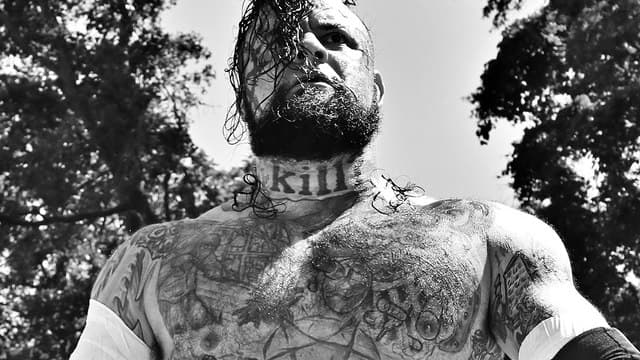If you look hard enough, you can find anime and manga about nearly any pastime. There are shows about airsoft guns, high-octane poetry card games, and building Gundam model kits.So it shouldn’t be strange to see a show crop up about something fairly universal like rugby. Except… there’s a bunch of them coming out all at once.
Generally when something like this happens, it’s a sign that something’s suddenly become very popular in Japan. For example, Sailor Moon-style magical girl series filled the market in the mid-1990s. So what’s happened that’s led to an influx of this particular sport in the midst of all the isekai and ninjas? History in the making, basically.
More Like This:
- New Anime to Love, Minus the Tropes You Don’t
- BAKI is “Guys Being Dudes”: The Anime
- Why the Second Season of One Punch Man Doesn’t Quite Land

Japan’s 3.5 Rugby Anime
The trend began just a couple of years ago with ALL-OUT!!, based on the 2013 manga by Shiori Amase. The protagonist of the high school sports series is Gion, who’s notably small for a rugby player. The series as a whole focuses on the main characters, their differences in personality and skill, and how they all come together as a cohesive team.

Then there’s this season’s Try Knights, about a boy who’s notably small for a rugby player. He actually gave up the sport for that very reason, but finds himself warming to it again after giving advice to a player on his high school’s team. It’s based on a manga written by Shunsaku Yano that premiered last year.

And then there’s the upcoming number24, with a story concept by K-On! and End of Evangelion production company MOVIC. The series will focus on Natsusa, a college boy who quit rugby for “certain reasons” (whether it’s because he was small for a rugby player is not yet known). Along with old friends and new rivals, Natsusa will return to the sport via his college’s team.
While it’s not a full-length anime, 2017’s Ani x Para: Who Is Your Hero? deserves a special mention. The documentary combined live interviews with short animated features to celebrate para-athletes in a variety of sports. Ashita no Joe creator Tetsuya Chiba designed the characters for the series’s entry on wheelchair rugby, a.k.a. Murderball.

A History of Rugby in Japan
With the sudden uptick in rugby anime, you would think it was a fairly new trend in Japan; however, the sport has been around since 1866, brought over by UK rugby school alums during the era of gunboat diplomacy. Approximately 30 years after the British formed their team in Yokohama, locals started taking part. Prior to that they already had a similar game known as kemari.
Rugby’s popularity waxed and waned over the decades. The Royal Family loved it, but Japan’s wartime fascist regime renamed it tokyu (“fighting ball”) to counteract its foreign nature. The wars left teams with fewer players, but rugby in post-war Japan grew in popularity quickly. It entered the global stage in the 1950s with professional games between England and Japan.
When Japan started competing against England on a larger scale, one major difference between the players became evident: their height. Japanese players were — you guessed it — smaller than most other rugby players. But pro player Shiggy Konno saw that as an untapped advantage: their stature meant better access to the ball and more agility than the larger players, provided they treated it as a strength rather than a weakness. So what may seem at first glance to be a trope across shows like Try Knights and ALL-OUT!! may actually be a call-back to Japan’s unique strategy when playing against international teams.
Today, Japan is home to more than 3,600 official rugby clubs, and its national team ranks 11th in the world. Still, rugby is only the fifth most popular sport in Japan. But it looks like the country is getting a case of World Cup Fever.

The 2019 World Cup
Japan’s rugby hype actually started all the way back in 2008, when they put in a bid to host this year’s World Cup. Their status as hosts for the 2019 competition was confirmed in 2009, giving them a good ten years to get things going.
While it’s an exciting time to be a rugby fan in Japan, there’s a major reason this year is so important: it’s the first time a World Cup will be held in Asia. So, while the sport has existed in Japan in some form for over 150 years, this will be a major landmark in defining its global presence.
Things kick off, as it were, on September 20. 12 separate stadia will be home to matches throughout the World Cup, with the final game taking place — appropriately enough — in Yokohama, where it all began.
Despite the increased interest and even the World Cup, it is unlikely that rugby will move beyond its fifth place spot in the eyes of Japanese sports fans. Nonetheless, we’re getting at least three anime out of it, and perhaps more to come as time goes on.


